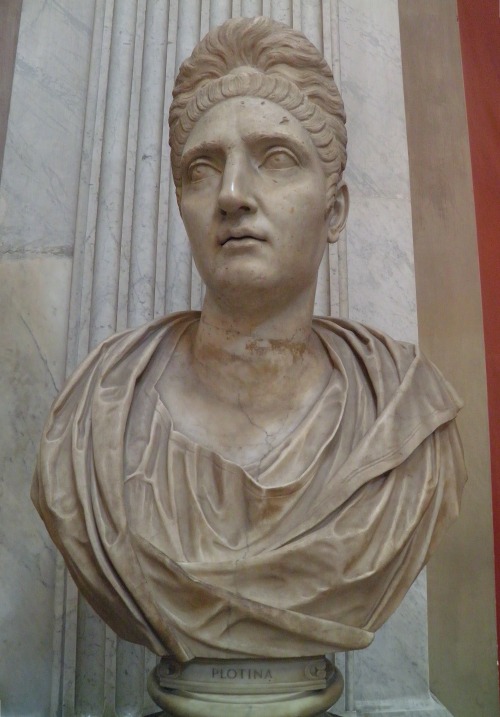Pot Of Red Clay Containing A Hoard Of 1,925 Roman Silver Coins, Buried C. 230 AD. Part Of The Falkirk

Pot of red clay containing a hoard of 1,925 Roman silver coins, buried c. 230 AD. Part of the Falkirk Hoard found in August 1933 in Bell’s Meadow, Falkirk, Scotland (National Museums Scotland).
More Posts from Novato-curioso-blog and Others
Ohhhh yo quiero una casa en un árbol como esta!!!!!

Tree House | Instagram | Facebook
Que hermoso animal. Por favor colaboremos con su preservación!!

Tundra Gray Wolf by Cheryl Nestico
Otra maravilla romana, ésta ubicada en Efeso

Library of Celsus in Ephesus.
via #NASA_APP
Viva Polonia

RIO2016: Maria Andrejczyk finishes 4th in Athletics - Women’s Javelin Throw. #TeamPoland #POL

by David Pinzer
Jungle Taxi, Yala, Sri Lanka
Alejandro, grande entre los grandes



HELLENISTIC WARFARE:
WHEN Alexander the Great died in 323 BCE, he left behind an empire devoid of leadership. Without a named successor or heir, the old commanders simply divided the kingdom among themselves. For the next three decades, they fought a lengthy series of wars - the Wars of the Diadochi or Wars of the Successors - in a futile attempt to restore the tattered kingdom.
Although the Hellenistic Age saw Greek language, art and philosophy flourish throughout Asia, there were few advances in military tactics. Instead, it was a time of “kingdoms and their armies.” The successors inherited an army borne out of the reforms of Philip II of Macedon. He was an innovator; the first Greek to master siege warfare, and with his son Alexander, they made Macedon the foremost power in both Greece and Asia. Together, Alexander and his father would create an army unlike anything the ancient world had ever seen.
Read More
Article by Donald L. Wasson || Photos by Mark Cartwright, Carole Raddato and Caroline Cervera on AHE
Plotina, la esposa de Trajano, el mejor emperador de Roma. Y dicen que junto a un gran hombre, una gran mujer.

Colossal portrait sculpture of the Empress Plotina, wife of Trajan, thought to have been made after her deification in 129 CE. Now in the Vatican Museum. Photo credit: Carole Raddato.
via #NASA_APP
-
 salemoo6 liked this · 2 years ago
salemoo6 liked this · 2 years ago -
 wildmiriflower liked this · 4 years ago
wildmiriflower liked this · 4 years ago -
 somusicdragon liked this · 5 years ago
somusicdragon liked this · 5 years ago -
 vaninnavaninni liked this · 6 years ago
vaninnavaninni liked this · 6 years ago -
 rheaitis reblogged this · 6 years ago
rheaitis reblogged this · 6 years ago -
 rheaitis liked this · 6 years ago
rheaitis liked this · 6 years ago -
 demfrankseins liked this · 6 years ago
demfrankseins liked this · 6 years ago -
 lorenzens-soil reblogged this · 6 years ago
lorenzens-soil reblogged this · 6 years ago -
 particlephysicsbabe reblogged this · 6 years ago
particlephysicsbabe reblogged this · 6 years ago -
 firsthairdolanddiplomat-blog liked this · 7 years ago
firsthairdolanddiplomat-blog liked this · 7 years ago -
 marreferences reblogged this · 7 years ago
marreferences reblogged this · 7 years ago -
 mum300 reblogged this · 7 years ago
mum300 reblogged this · 7 years ago -
 punkystrangeling reblogged this · 7 years ago
punkystrangeling reblogged this · 7 years ago -
 punkystrangeling liked this · 7 years ago
punkystrangeling liked this · 7 years ago -
 mum300 reblogged this · 8 years ago
mum300 reblogged this · 8 years ago -
 gothamherb liked this · 8 years ago
gothamherb liked this · 8 years ago -
 stand-up-and-fight-daleks reblogged this · 8 years ago
stand-up-and-fight-daleks reblogged this · 8 years ago -
 jacxiewolf liked this · 8 years ago
jacxiewolf liked this · 8 years ago -
 bipolar-tanuki liked this · 8 years ago
bipolar-tanuki liked this · 8 years ago -
 enlitenblogg reblogged this · 8 years ago
enlitenblogg reblogged this · 8 years ago -
 erbstuck reblogged this · 8 years ago
erbstuck reblogged this · 8 years ago -
 velvetpraises liked this · 8 years ago
velvetpraises liked this · 8 years ago -
 revy-7-blog reblogged this · 8 years ago
revy-7-blog reblogged this · 8 years ago -
 revy-7-blog liked this · 8 years ago
revy-7-blog liked this · 8 years ago -
 destroyerofcroutons reblogged this · 8 years ago
destroyerofcroutons reblogged this · 8 years ago -
 cloudbatcave reblogged this · 8 years ago
cloudbatcave reblogged this · 8 years ago -
 unearthlychildren reblogged this · 8 years ago
unearthlychildren reblogged this · 8 years ago -
 daikiraitodos liked this · 8 years ago
daikiraitodos liked this · 8 years ago -
 burglethyturts reblogged this · 8 years ago
burglethyturts reblogged this · 8 years ago -
 burglethyturts liked this · 8 years ago
burglethyturts liked this · 8 years ago -
 thebluebishop liked this · 8 years ago
thebluebishop liked this · 8 years ago -
 draconic-presence-blog reblogged this · 8 years ago
draconic-presence-blog reblogged this · 8 years ago -
 b-boop5 liked this · 8 years ago
b-boop5 liked this · 8 years ago -
 incognitanonvides liked this · 8 years ago
incognitanonvides liked this · 8 years ago -
 owlask liked this · 8 years ago
owlask liked this · 8 years ago -
 yeezdeck liked this · 8 years ago
yeezdeck liked this · 8 years ago -
 heroineimages liked this · 8 years ago
heroineimages liked this · 8 years ago -
 crossing-rubicon reblogged this · 8 years ago
crossing-rubicon reblogged this · 8 years ago